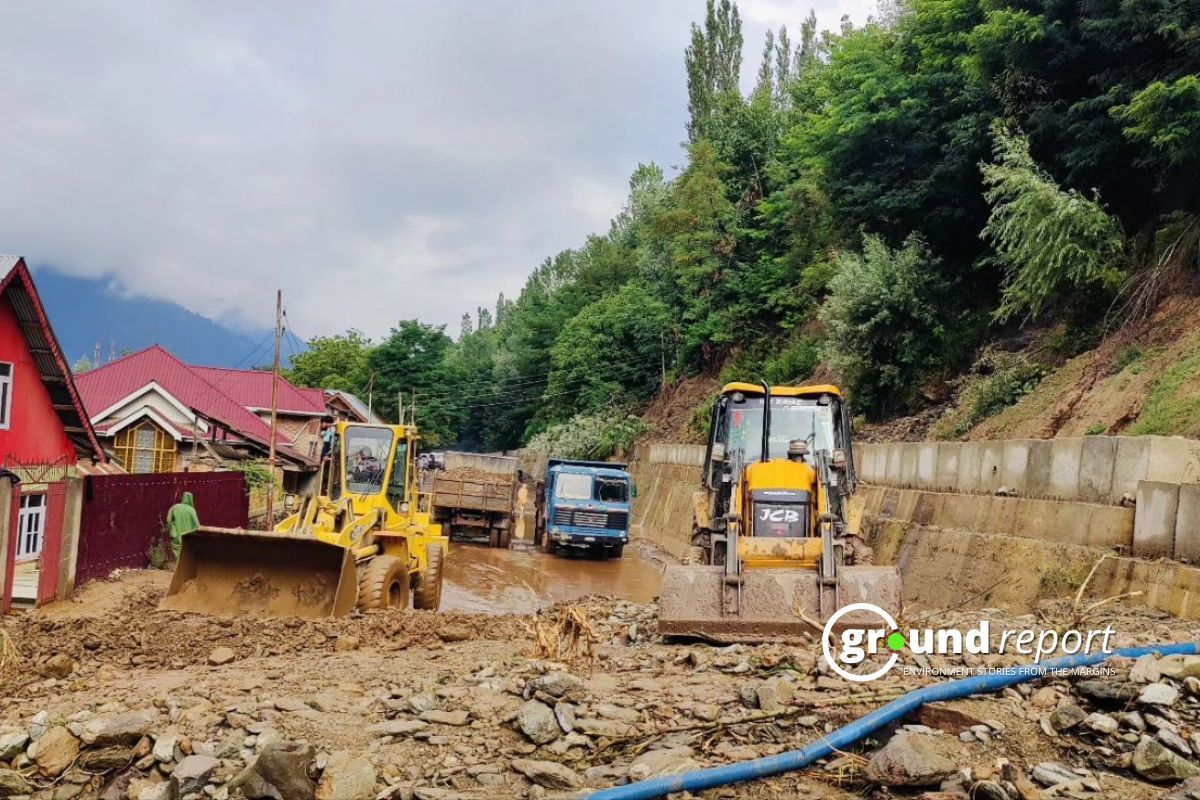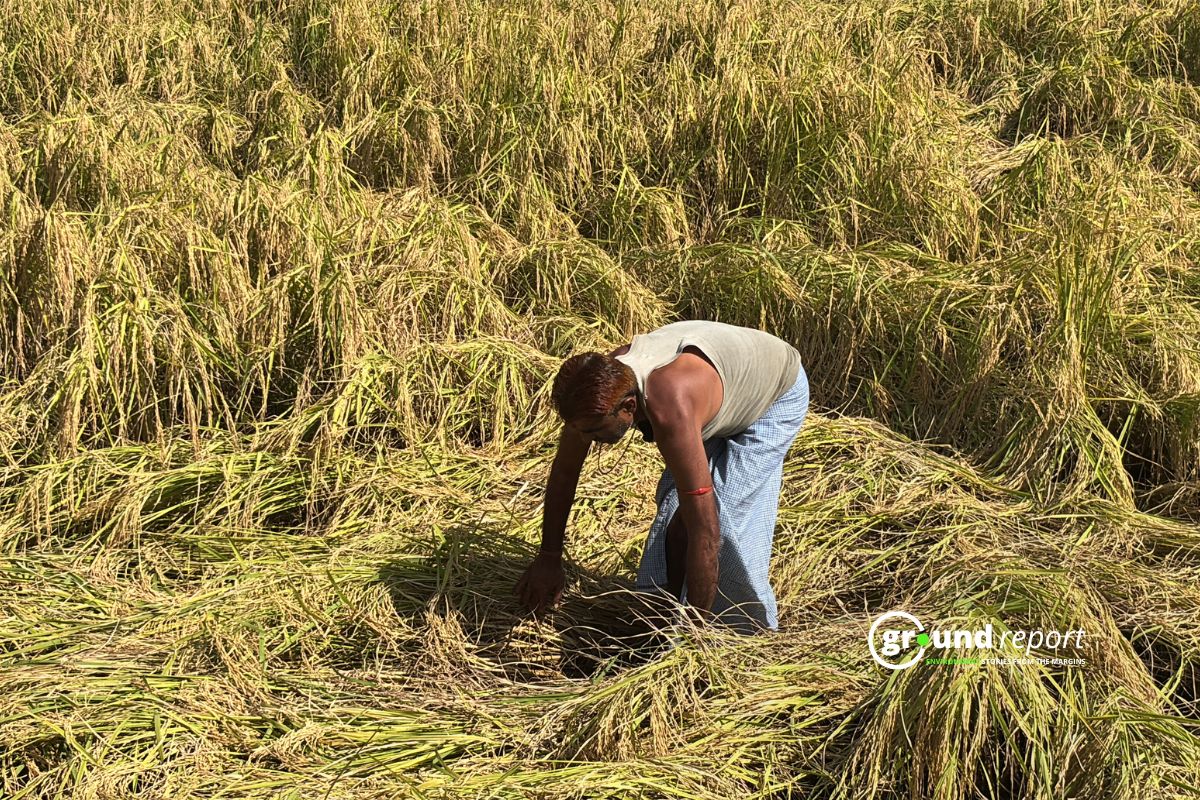In 2024, the world faced unprecedented climate-related disasters, marking a pivotal year in the climate crisis. According to a United Nations’ World Meteorological Organisation (WMO) report, extreme weather events surged due to human-induced climate change. The year saw record-high temperatures, the highest greenhouse gas levels in 800,000 years, and widespread displacement due to climate-induced disasters.
In 2024, over 600 extreme weather events, including 148 deemed “unprecedented,” led to the displacement of 824,000 people and resulted in 1,700 fatalities, as reported by the World Meteorological Organisation.
Record displacements due to extreme weather
The WMO’s 2024 report reveals a record number of new displacements caused by extreme weather events, the highest in 16 years. In total, 2024 saw 151 extreme weather events, including devastating tropical cyclones, floods, and droughts. This surge in displacement has had far-reaching consequences, with millions losing their homes, livelihoods, and access to basic services.
The year saw the highest food insecurity, with 18 countries facing worsening crises by mid-2024, exacerbated by drought, conflict, and rising food prices. In Southern Africa, El Niño worsened the situation, reducing global cereal harvests and causing food shortages.
The WMO report highlighted that greenhouse gas levels, like carbon dioxide, methane, and nitrous oxide, reached record highs in 800,000 years. In 2023, carbon dioxide alone hit 420 parts per million (ppm), a 151% increase from pre-industrial levels. The continuous rise in these gases, especially CO2, which stays in the atmosphere for generations, has accelerated global warming.
!function(){“use strict”;window.addEventListener(“message”,(function(a){if(void 0!==a.data[“datawrapper-height”]){var e=document.querySelectorAll(“iframe”);for(var t in a.data[“datawrapper-height”])for(var r,i=0;r=e[i];i++)if(r.contentWindow===a.source){var d=a.data[“datawrapper-height”][t]+”px”;r.style.height=d}}}))}();
Despite these concerning figures, global carbon emissions haven’t slowed, contributing to worse future impacts. The report noted the last decade (2015-2024) had the 10 hottest years on record, with 2024 seeing temperatures far surpassing previous highs. Experts warned the continued rise in emissions is putting humanity at greater risk of climate-related disasters.
Oceans warm, fueling storms, rising sea levels
In 2024, record temperatures and significant ocean warming occurred. Around 90% of the energy trapped by greenhouse gases is stored in the oceans, and their heat content reached a 65-year high. This warming fuels tropical storms, contributes to rising sea levels, and degrades marine ecosystems and biodiversity.
Sea level rise has accelerated, with global mean sea levels at their highest since 1993. The increase rate has doubled since then, threatening coastal ecosystems, infrastructure, and freshwater supplies due to saltwater contamination.
The report highlighted the continued loss of glaciers and sea ice, with the last three years representing the worst glacier mass balance on record. Glaciers in Norway, Sweden, and the Andes have retreated dramatically, worsening water shortages and increasing hazards.
Extreme heatwaves cause underestimated deaths
In 2024, heatwaves became one of the most devastating impacts of the climate crisis. The WMO warned that the effects of extreme heat are often underestimated, with heat-related mortality potentially much higher than reported. In summer, East Asia, South-east Europe, the Mediterranean, the Middle East, and the southwestern United States experienced prolonged extreme heat, setting new records at weather stations globally.
This followed a pre-monsoon period of record-breaking temperatures from March to May in regions including South-east Asia, West Africa, Central America, and northern India. These heatwaves, along with their impact on agriculture and ecosystems, have led to further stress on already fragile societies.
WMO Secretary General Prof. Celeste Saulo emphasised the importance of improving early warning systems and investing in climate services to help communities and governments prepare. Currently, only half of countries have adequate early warning systems, leaving many vulnerable to climate change’s effects.
“We’re making progress, but we need to go further and faster,” said Prof. Saulo. “Investment in weather, water, and climate services is crucial to build safer, more resilient communities.”
The WMO’s 2024 report highlights the planet’s grim state and growing global efforts to address the climate crisis, including strengthening cooperation on climate services, improving early warning systems, and pursuing sustainable practices. However, experts warn that more action is needed to reduce greenhouse gas emissions and mitigate climate change impacts.
Support us to keep independent environmental journalism alive in India.
Keep Reading
California Fires Live updates: destructive wildfires in history
Hollywood Hills burning video is fake and AI generated
Devastating wildfire in California: wind, dry conditions to blame?
Los Angeles Cracks Under Water Pressure
From tourist paradise to waste wasteland: Sindh River Cry for help
Follow Ground Report on X, Instagram and Facebook for environmental and underreported stories from the margins. Give us feedback on our email id greport2018@gmail.com.
Don’t forget to Subscribe to our weekly newsletter, Join our community on WhatsApp, and Follow our YouTube Channel






